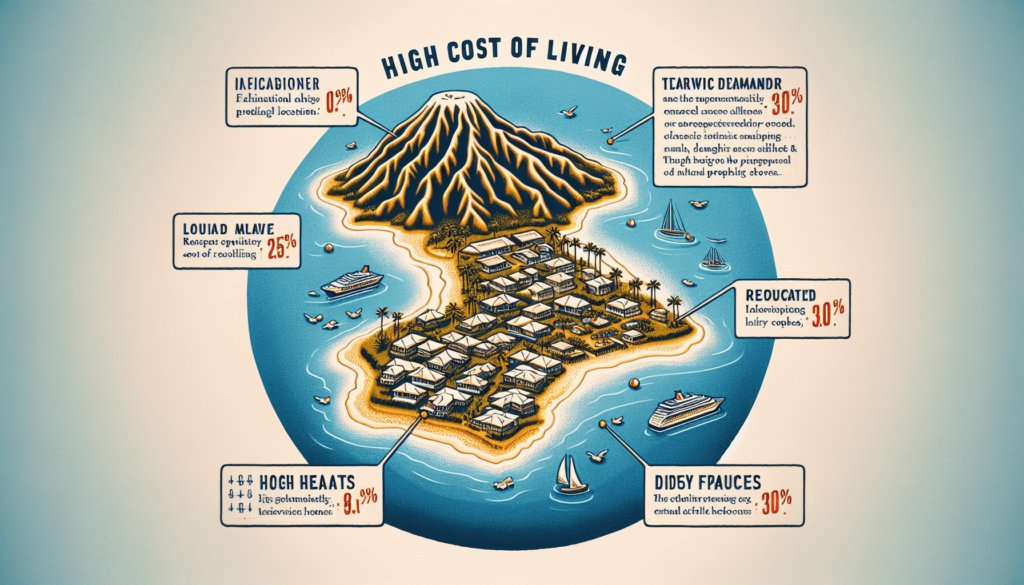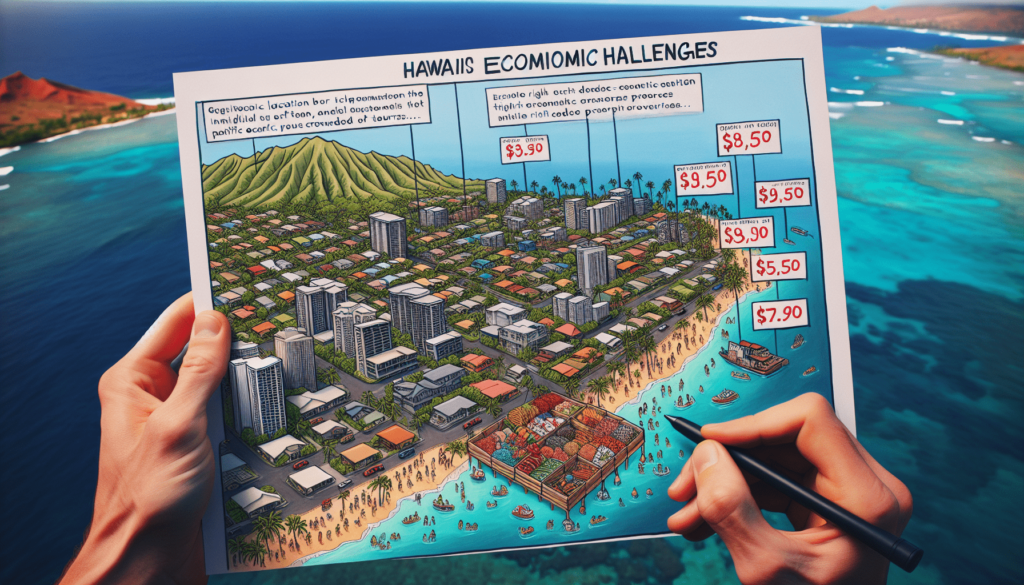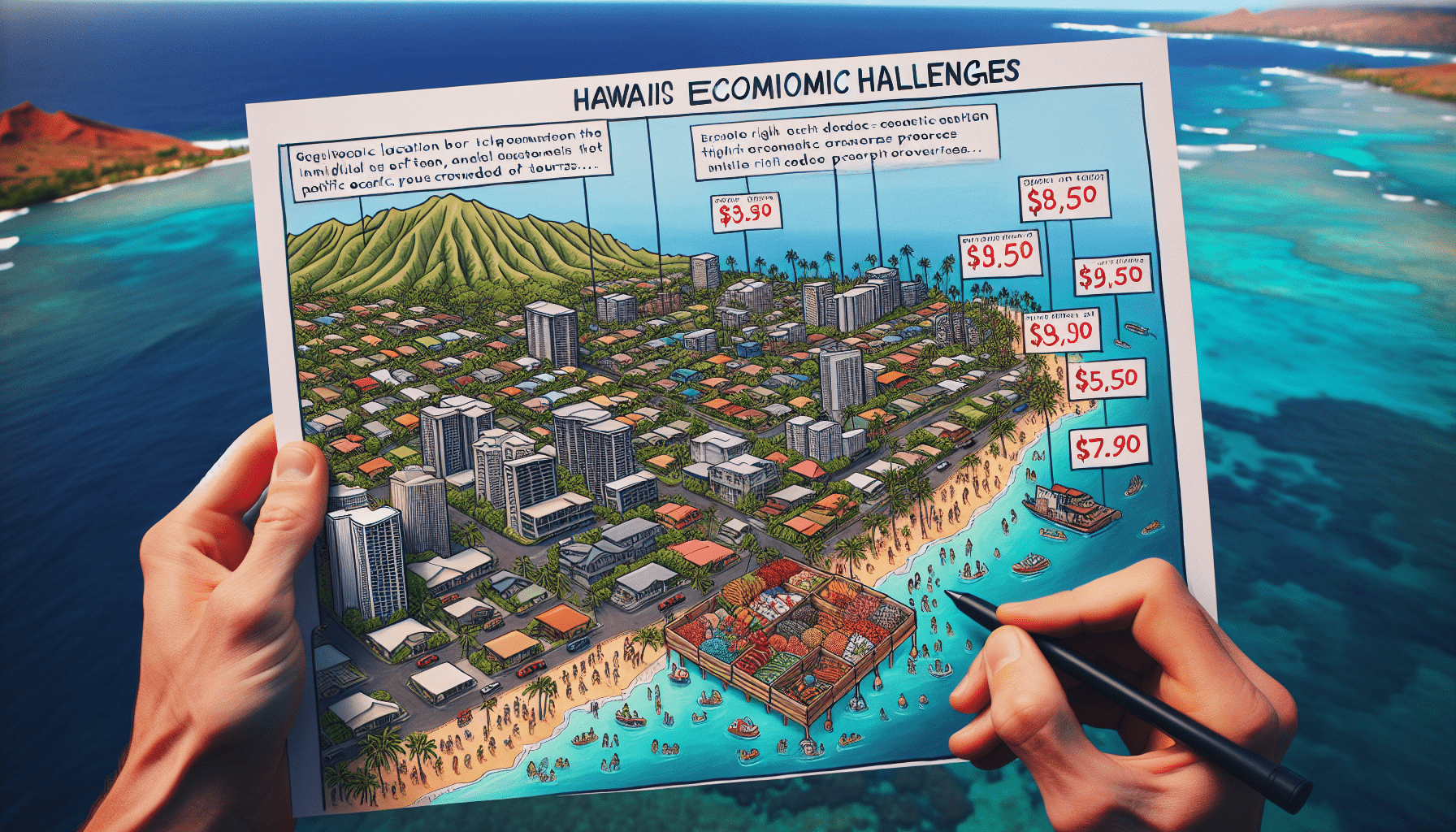Have you ever wondered why a trip to Hawaii can be a hefty investment? The allure of pristine beaches and stunning landscapes often comes with a price tag that leaves many travelers perplexed. In this article, we will explore the factors that contribute to the high cost of living and visiting Hawaii, shedding light on the intricate web of reasons behind its expensive reputation. From geographical isolation to import dependency, we’ll uncover why this paradise in the Pacific comes with a higher price than you might expect. So, pack your virtual bags and join us on this insightful journey into the realm of Hawaii’s expenses.

Geographical Isolation
Hawaii’s geographical isolation plays a significant role in driving up costs in the state. Located in the middle of the Pacific Ocean, thousands of miles away from mainland United States, shipping goods to and from Hawaii can be incredibly expensive. The high shipping costs are mainly due to the long distances and limited shipping options available. This logistical challenge results in increased prices for consumers as businesses have to pass on these expenses.
Furthermore, the limited availability of resources adds to the overall cost. Being an archipelago, Hawaii has limited land for agriculture and resource extraction. This requires the state to import a substantial portion of its goods and resources, increasing the reliance on shipping, and subsequently, the cost of living.
High Cost of Living
Hawaii is notorious for its high cost of living, which can be attributed to various factors. Firstly, the housing market in the state is notably expensive. The demand for housing exceeds the available supply, resulting in inflated prices. Additionally, the limited amount of land available for development further drives up the cost of housing, making it challenging for residents to find affordable options.
Apart from housing, other aspects of daily life also contribute to the high cost of living in Hawaii. Utility costs, including electricity, water, and gas, tend to be higher than the national average. The state’s isolation and reliance on imported resources make utilities more expensive. Additionally, groceries and goods in Hawaii come at a premium due to the extra costs associated with shipping and importing products.
Tourism
The tourism industry in Hawaii is a double-edged sword when it comes to the cost of living. While it brings economic benefits to the state, it also leads to an inflation of prices for tourists. The high demand for accommodations, attractions, and dining experiences often results in increased prices during peak tourist seasons. This can indirectly impact the cost of living for residents as businesses cater to the lucrative tourism market.
Imported Goods
Being an island state, Hawaii heavily relies on imported goods for everyday necessities. However, importing goods comes with its own set of challenges and costs. The need to transport goods by ship or air significantly impacts the prices of imported products. Additionally, import taxes and tariffs imposed on certain goods can further increase their prices, making them more expensive for consumers in Hawaii.

Transportation
Transportation options in Hawaii are relatively limited compared to mainland United States. While cars are the primary mode of transportation, the high fuel costs add to the expenses of owning and operating a vehicle. The isolated nature of the state also means that air travel becomes a necessity for inter-island or mainland trips, and airfare can be costly. Limited transportation alternatives and higher fuel prices place an additional burden on residents’ wallets.
Local Wages
Although Hawaii boasts stunning natural beauty and a rich cultural heritage, local wages tend to be relatively lower compared to other states. The higher cost of living in Hawaii, particularly housing and utilities, creates a considerable disparity between income and expenses. Many residents find it challenging to keep up with the high costs, especially when their wages do not match the living standards in the state.
Land Costs
The scarcity of available land in Hawaii contributes to its exorbitant prices. As an archipelago, space for development is limited, resulting in a high demand for land. Whether for residential or commercial purposes, the competition drives land prices up. The limited availability and sky-high costs of land make it difficult for individuals and businesses to find affordable options, further reinforcing the expensive nature of living in Hawaii.
Infrastructure
Maintaining and building infrastructure in Hawaii require significant funds due to the state’s unique geographic challenges. The remote location and dispersed islands make infrastructure projects more complex and costly to execute. Whether it’s constructing roads, bridges, or utility networks, the expenses associated with providing essential infrastructure contribute to the overall high cost of living in Hawaii.
High Taxes
Residents of Hawaii are burdened with various taxes and fees that add to their financial responsibilities. State taxes, including income tax, sales tax, and vehicle registration fees, can take a significant portion of a person’s income. Additionally, high property taxes contribute to the overall cost of living, particularly for homeowners. These tax obligations further impact the affordability of living in Hawaii.
Customs and Regulations
Hawaii’s stringent regulations and inspections also contribute to the higher costs in the state. Due to its isolated ecosystem, Hawaii has implemented strict measures to protect its unique environment from invasive species and diseases. This results in extensive inspections and compliance procedures for goods entering the state, adding extra costs for businesses and consumers. While intended for environmental preservation, these regulations indirectly contribute to the overall cost of living.
In conclusion, Hawaii’s expensive nature can be attributed to several factors stemming from its geographical isolation. The inherent challenges of shipping goods and limited resource availability drive up prices, while the high cost of living is fueled by expensive housing, utilities, groceries, and goods. The tourism industry, although beneficial for the economy, can lead to inflated prices. Imported goods face transportation costs and tariffs, while limited transportation options and high fuel costs add to residents’ expenses. The relatively lower local wages contribute to the overall financial strain, further compounded by the high costs of land, infrastructure maintenance, taxes, and stringent regulations. Understanding these factors sheds light on why living in Hawaii comes with a premium price tag.
